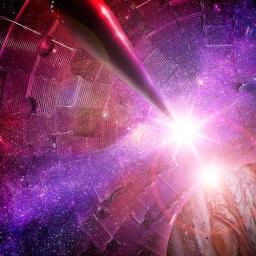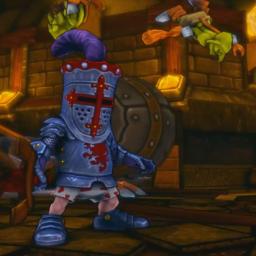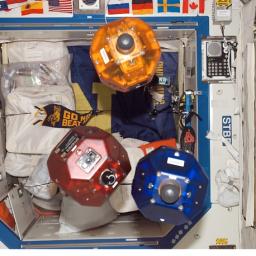Everyone knows opinions are like noses: everyone has one. But Bruce Byfield has been at it longer than most, and his opinion often reflects the industry. And he loves KDE5.
At a time when the Linux desktop offers six main alternatives (Cinnamon, GNOME, KDE Plasma, LXDE, Mate, Unity and Xfce), KDE Plasma consistently tops reader polls with an average of 35-40 percent. In such a diverse market, these figures indicate a broad appeal that other Linux desktop alternatives can't match.
I believe that one of the main reasons for this appeal is the KDE design philosophy. GNOME and Unity may offer a more aesthetic-looking default, but only at the cost of simplifying both the desktop and the utilities in the name of reducing clutter.
By contrast, KDE goes to the opposite extreme. KDE applications typically include every function you can imagine. Sometimes, they can take a version or two to organize the menus in a meaningful way, but applications like Amarok, K3B, or digiKam go far beyond the most common use cases. When you run into problems with them, they usually offer solutions.
Read the rest of his thoughtful and insightful review here.
[Ed. note: Actually, opinions are like something else. But Pipedot is a family-friendly site.]
Recent scientific inquiry shows that the mighty Tyrannosaurus may have been inclined to hunt in packs, rather than going it alone. Adjacent track ways of tyrannosaurus footprints have been discovered (
full text) that suggest that tyrannosaurids hunted in packs. The fossilised footprints show clear evidence that the animals
travelled together, with all three tracks going in the same direction around the same time, suggesting that these dinosaurs may have been social, and not solitary, animals.
The skeletal record of tyrannosaurids is well-documented, whereas their footprint record is surprisingly sparse. There are only a few isolated footprints attributed to tyrannosaurids and, hitherto, no reported trackways. We report the world's first trackways attributable to tyrannosaurids, and describe a new ichnotaxon attributable to tyrannosaurids. These trackways are from the Upper Cretaceous (Campanian - Maastrichtian) of northeastern British Columbia, Canada. One trackway consists of three tridactyl footprints, and two adjacent trackways consist of two footprints each. All three trackways show animals bearing southeast within an 8.5 meter-wide corridor. Similarities in depth and preservation of the tyrannosaurid tracks indicate that these three trackways were made by track-makers walking concurrently in the same direction. These trackways add significantly to previous osteology-based hypotheses of locomotion and behavior in Tyrannosauridae by providing ichnologic support for gregariousness in tyrannosaurids, and the first record of the walking gait of tyrannosaurids.

The relationship among Microsoft, Intel, and ARM remains so intricate it's keeping analysts busy full time trying to deduce what will happen next.
There's good reason to believe Intel's new Bay Trail chips provide performance and energy consumption that's not quite at ARM levels but that do permit Microsoft to hedge its bets by staying with the Intel chips its software seems to require, and ditch ARM altogether. But on the smartphone side, things aren't as clear and there, Qualcomm's ARM chips remain really the leader for mobile computing and an important part of most vendors' strategies.
When Intel lacked competitive low-power mobile system-on-a-chip, or SoC, products, it made sense for Microsoft to want to hedge its bets. After all, if Intel couldn't or wouldn't deliver, then Microsoft's tablet ambitions would crumble. However, when Intel launched its first low-power SoC for tablets -- known as Clover Trail -- it was actually a pretty decent chip. Graphics performance was terrible, but the general-purpose performance was quite a bit better than the Tegra 3 in the Surface RT. Intel's next-generation product, Bay Trail, was more competitive, offering leadership CPU performance and fairly decent graphics performance. The graphics performance of the Tegra 4 found inside of the Surface 2 was still better than Bay Trail's, but the delta wasn't so large as to make the Intel chip look laughable.
That doesn't necessarily mean happy days for Intel. In fact, ExtremeTech believes Intel forcing its way into mobile computing may destroy Intel from the inside out.Fast forward to the present day, and the market Intel is fighting to enter has changed more rapidly than Chipzilla anticipated. Intel chose to stick with dual-core with Hyper-Threading while the ARM SoCs jumped to quad-core. It chose to keep its modem manufacturing at TSMC, where it has faced repeated, unspecified delays. For all that Intel leads the world in semiconductor manufacturing, its XMM 7160 (that's the company's 4G modem actually shipping in any consumer hardware) is built on 40nm, while Qualcomm's Gobi 9i-35 platform is sitting on 20nm.
Stay tuned.

The conditions deep inside large planets, such as Jupiter, Uranus and other planets recently discovered outside our solar system, have been
experimentally recreated. This allows researchers to re-create and accurately measure material properties that control how these planets evolve over time (information that is essential for understanding how these massive objects form).
Using the largest laser in the world, the National Ignition Facility at Lawrence Livermore National Laboratory, teams from the Laboratory, University of California, Berkeley and Princeton University squeezed samples to 50 million times Earth's atmospheric pressure, which is comparable to the pressures at the center of Jupiter and Saturn. Of the 192 lasers at NIF, the team used 176 with exquisitely shaped energy versus time to produce a pressure wave that compressed the material for a short period of time. The sample -- diamond -- is vaporized in less than 10 billionths of a second.
Though diamond is the least compressible material known, the researchers were able to compress it to an unprecedented density greater than lead at ambient conditions.
"The experimental techniques developed here provide a new capability to experimentally reproduce pressure-temperature conditions deep in planetary interiors," said Ray Smith, LLNL physicist and lead author of the paper. Such pressures have been reached before, but only with shock waves that also create high temperatures -- hundreds of thousands of degrees or more -- that are not realistic for planetary interiors. The technical challenge was keeping temperatures low enough to be relevant to planets. The problem is similar to moving a plow slowly enough to push sand forward without building it up in height. This was accomplished by carefully tuning the rate at which the laser intensity changes with time.
"This new ability to explore matter at atomic scale pressures, where extrapolations of earlier shock and static data become unreliable, provides new constraints for dense matter theories and planet evolution models," said Rip Collins, another Lawrence Livermore physicist on the team.
Abstract
The Tails Linux distro gained a lot of publicity when Edward Snowden noted it as his operating system of choice. But while TAILS goes to great pains to ensure maximum anonymity when using online services, it is not impenetrable. In fact, the software's design is seriously flawed, says Loc Nguyen, a researcher at Exodus.
Tails is comprised of numerous components working in interchange," he said. ... however because there are numerous inter-locking mechanisms in play on the system, it's difficult to readily pinpoint a particular weak area."
Nguyen and team had identified a number of zero-day vulnerabilities in the distro that have gone unaddressed and remain open even as TAILS releases an update to the software. Exodus said it would release details about the zero-days in a series of blog posts next week. For the Tails platform, privacy is contingent on maintaining anonymity and ensuring their actions and communications are not attributable. Thus, any violation of those foundational pillars should be considering highly critical," added Nguyen. This affects every user of Tails, who should all "diversify security platforms so as not to put all your eggs in one basket", he added. Exodus sells to private and public businesses hoping to use the findings for either offensive or defensive means. Those unconcerned about governments targeting their systems might not be concerned about the Tails zero-days. Others will likely be anxious one of their trusted tools to avoid government hackers contains vulnerabilities that could be exploited to spy on any user of the OS."
More on the vulnerabilities at
the Register and
Forbes.
Yes, Android is based on the Linux kernel, but until the Linux and Android platforms and application ecosystems have been separate things.
MicroXwin hopes to change that with a new Linux distro called VolksPC that runs both Debian and Android apps in fully native mode.
"We created a unified distribution that allows both Android and Debian LXDE/XFCE applications to run simultaneously at native speeds. On ARM, our distribution is based on a modified ARMHF Debian Wheezy rootfs", the developers write. As Phoronix reports, the developers claim that apps under both environments run "at native speeds"; the only changes to Android are in startup scripts, providing full compatibility with existing applications; and MicroXwin provides a high-speed X-Windows framework for the system.
The distro hopes to provide the best of both worlds, and a Linux desktop environment with full support for the entire Debian app repository while providing Android's simplicity and ease of use where things like HD video are concerned.

Serious gamers look to dedicated hardware and serious firepower for their gaming experience, but the casual gamer turns to the web, and probably has to start by downloading and installing a plug-in first. That turns a lot of gamers off, and
Mozilla hopes to do something about it. Says TechCrunch:
For the longest time, web-based gaming meant that you had to install (often dubious) plugins to make games run smoothly in your browser. WebGL and other technologies changed that a bit in recent years, but because JavaScript isn't exactly a speed freak, plugin-free gaming never quite took off. Mozilla has been trying to work around this with asm.js, a subset of JavaScript that can run extremely fast in Firefox and today, the organization announced that the first commercial 3D game based on asm.js is about to launch.
That game is
Dungeon Defenders Eternity, playable on the desktop via Steam, or on the web at
playverse.com. A mix of tower defense and role playing styles, looks like a a fun game first, but a good test of a new technology as well. Mozilla's ASM.js may not be revolutionary, but it does stand a chance at improving the ease with which the casual gamer can simply start up a game on the web without needing to worry about downloading and installing a plug-in.
The downing of Malaysia Airline MH17 in the Ukraine is turning out to be one of the biggest of tragedies of 2014 and we don't have all the answers yet.
Here is a look at some of the technologies being used to unravel the mystery. From infrared to satellite imagery to chemical signatures, it's all being used to get answers. And don't rule out human technology either: eyewitnesses make the list of forensic strategies as well.
The most important element in instilling similar certainty among European partners will probably be infrared satellite imagery. The National Reconnaissance Office, or NRO, and the Air Force Space Command operate a number of infrared satellites, such as the Space Based Infrared System (SBIRS). There are currently two SBIRS satellites in orbit but there will be six by 2022, with Lockheed Martin as developer, under control of Air Force Space Command.
Courtesy of the
National Journal.
A study on plants using data from over 1000 forests has found that
the size and age of the plant has more of an impact on their productivity than temperature and precipitation.
"A fundamental assumption of our models for understanding how climate influences the functioning of ecosystems is that temperature and precipitation directly influence how fast plants can take up and use carbon dioxide," said Enquist, a professor in the UA's Department of Ecology and Evolutionary Biology whose research lab led the study.
"Essentially, warm and wet environments are thought to allow plant metabolism to run fast, while cold and drier environments slow down metabolism and hence lower biomass production in ecosystems," he said. "This assumption makes sense, as we know from countless experiments that temperature and water control how fast plants can grow. However, when applied to a the scale of entire ecosystems, this assumption appears to not be correct."
To test the assumption on the scale of ecosystems, the team developed a new mathematical theory that assesses the relative importance of several hypothesized drivers of net primary productivity. That theory was then evaluated using a massive new dataset assembled from more than 1,000 different forest locations across the world.
The analysis revealed a new and general mathematical relationship that governs worldwide variation in terrestrial ecosystem net primary productivity. The team found that plant size and plant age control most of the variation in plant productivity, not temperature and precipitation as traditionally thought.
The abstract is available here.
Since 2006, three bowling ball-size free-flying Synchronized Position Hold, Engage, Reorient, Experimental Satellites (SPHERES) have been floating around the International Space Station. Now, they are
attaching a smartphone to the spheres, making them "Smart SPHERES", a more "intelligent" free-flying robot with built-in cameras to take pictures and video, sensors to help conduct inspections, powerful computing units to make calculations and Wi-Fi connections to transfer data in real time to the computers aboard the space station and at mission control in Houston.
In a two-phase experiment, astronauts will manually use the smartphones to collect visual data using the integrated custom 3-D sensor to generate a full 3-D model of their environment. After the map and its coordinate system are developed, a second activity will involve the smartphones attached to the SPHERES, becoming the free-flying Smart SPHERES. As the free-flying robots move around the space station from waypoint to waypoint, utilizing the 3-D map, they will provide situational awareness to crewmembers inside the station and flight controllers in mission control. These experiments allow NASA to test vision-based navigation in a very small mobile product.
"NASA uses robots for research and mission operations; just think about the rovers on Mars or the robotic arm on the ISS or space shuttle," said Chris Provencher, manager of the Smart SPHERES project. "Inside the ISS space is limited, so it's really exciting to see technology has advanced enough for us to demonstrate the use of small, mobile robots to enhance future exploration missions."
Ultimately it is the hope of researchers that these devices will perform housekeeping-type tasks, such as video surveys for safety and configuration audits, noise level measurements, air flow measurements, and air quality measurements, that will offset work the astronauts currently perform.




